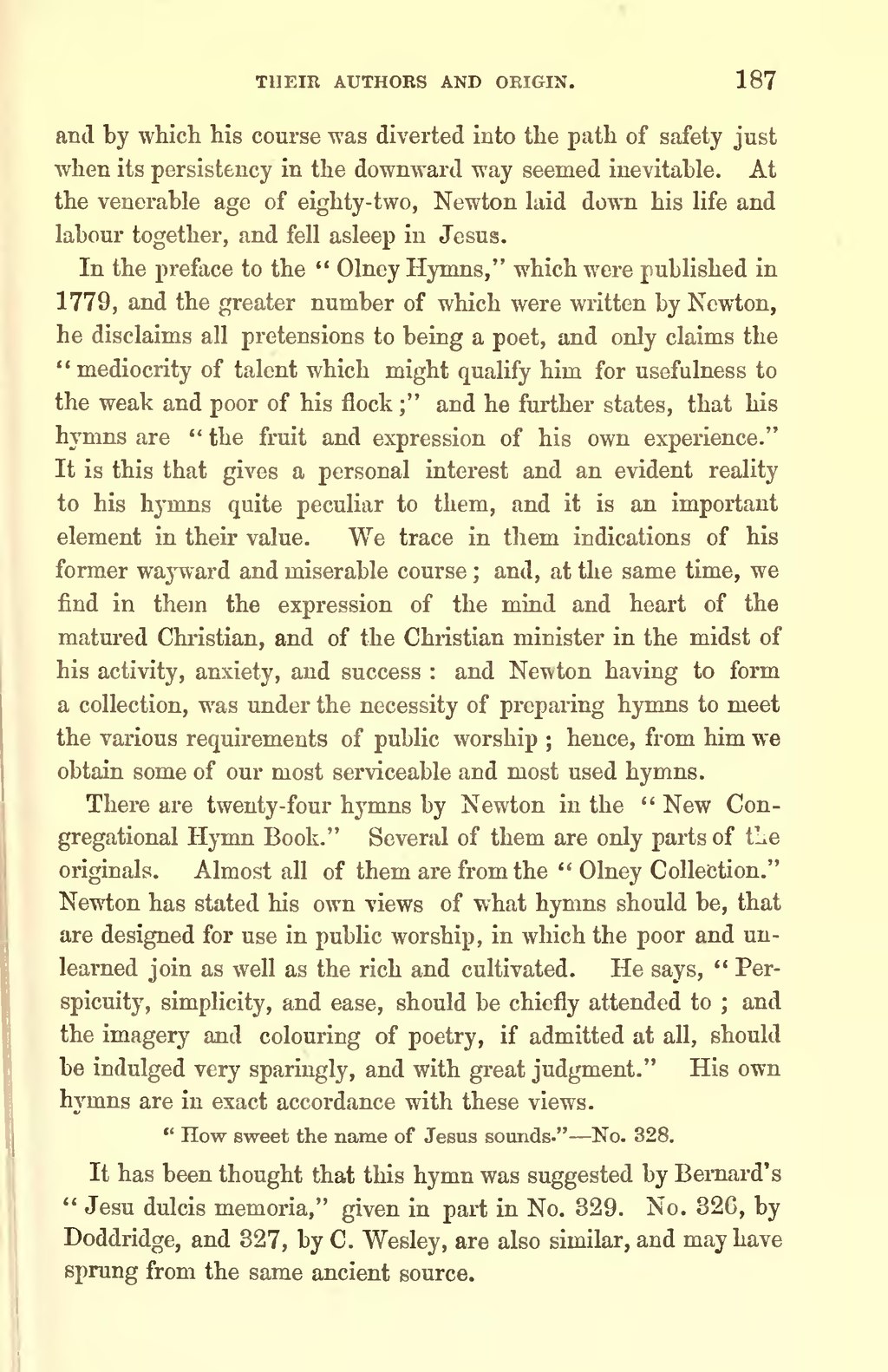THEIR AUTHORS AND ORIGIN. 187
and by which his course was diverted into the path of safety just when its persistency in the downward way seemed inevitable. At the venerable age of eighty-two, Newton laid clown his life and labour together, and fell asleep in Jesus.
In the preface to the " Olncy Hymns," which were published in 1779, and the greater number of which were written by Newton, he disclaims all pretensions to being a poet, and only claims the " mediocrity of talent which might qualify him for usefulness to the weak and poor of his flock ;" and he further states, that his hymns are " the fruit and expression of his own experience." It is this that gives a personal interest and an evident reality to his hymns quite peculiar to them, and it is an important element in their value. We trace in them indications of his former wayward and miserable course ; and, at the same time, we find in them the expression of the mind and heart of the matured Christian, and of the Christian minister in the midst of his activity, anxiety, and success : and Newton having to form a collection, was under the necessity of preparing hymns to meet the various requirements of public worship ; hence, from him we obtain some of our most serviceable and most used hymns.
There are twenty-four hymns by Newton in the " New Con gregational Hymn Book." Several of them are only parts of the originals. Almost all of them are from the " Olney Collection." Newton has stated his own views of what hymns should be, that are designed for use in public worship, in which the poor and un learned join as well as the rich and cultivated. He says, " Per spicuity, simplicity, and ease, should be chiefly attended to ; and the imagery and colouring of poetry, if admitted at all, should be indulged very sparingly, and with great judgment." His own hymns are in exact accordance with these views.
" How sweet the name of Jesus sounds." No. 328.
It has been thought that this hymn was suggested by Bernard s " Jesu dulcis memoria," given in part in No. 329. No. 32G, by Doddridge, and 327, by C. Wesley, are also similar, and may have sprang from the same ancient source.
�� �
